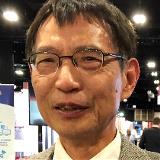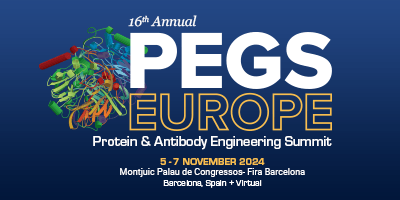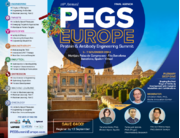
Cambridge Healthtech Institute의 트레이닝 세미나에서는 학술적 이론 및 배경에 대해 폭넓게 다루며, 실제 사례 연구 및 직면한 문제와 적용된 해결책에 관한 정보를 제공합니다. 각각의 트레이닝 세미나에서는 공식적인 강의와 인터랙티브 논의·활동을 조합하여 학습 효과를 최대화하고 있습니다. 숙련된 강사가 트레이닝 세미나를 주최하며, 현재의 연구 내용에 적용 가능한 컨텐츠에 초점을 맞추고, 해당 분야의 초심자용 중요한 가이던스를 제공합니다.
트레이닝 세미나는 대면 형식으로만 개최됩니다.
2024년11월5일(화)08:25 - 18:35
TS7A: Introduction to Machine Learning for Biologics Design
INSTRUCTOR BIOGRAPHIES:
 Christopher R. Corbeil, PhD, Research Officer, Human Health Therapeutics, National Research Council Canada
Christopher R. Corbeil, PhD, Research Officer, Human Health Therapeutics, National Research Council Canada
TS8A: Introduction to Multispecific Antibodies: History, Engineering, and Application
Introduction to Multispecific Antibodies will be organized as an informative and practical guide to getting up to speed on critical aspects of multispecific antibody therapeutics. Topics will include historical successes, failures, and lessons learned. Specific practical instruction will span mechanisms of action, engineering, developability, regulatory considerations, and translational guidelines. Perspectives on ideal implementation of multispecifics as targeted and immunomodulatory approaches will be discussed.
Topics to be Covered:
- A brief history of bispecific antibodies: 60 years of progress with critical advances and key pioneers
- Multispecific applications and powerful mechanisms-of-action
- Engineering multispecific antibodies:100 formats and counting
- Multispecific-specific considerations in preclinical development and regulatory landscape
- Developability, manufacturing, and analytical considerations
- Clinical experience, translation, and regulatory approval
- Current trends and future opportunities in regulating immune checkpoints, cell-based therapies, and personalized approaches
INSTRUCTOR BIOGRAPHIES:
 G. Jonah Rainey, PhD, Senior Director, Protein Engineering, Eli Lilly and Company
G. Jonah Rainey, PhD, Senior Director, Protein Engineering, Eli Lilly and Company
TS9A: Current Applications of Host Expression Systems and Optimisation of the CEPA Workflow to Support Therapeutic Generation and Structural Biology
Topics to be Covered:
Review of host expression systems and their application
- Focus on eukaryotic expression systems
- Addressing bottlenecks in harvesting/purification
- Setting QC standards
Case Studies
- Difficult-to-express proteins
- Structural biology support
- Automation/Screening
- Scale-down/Scale-up
Agenda:
8:30 am Opening Remarks/Introductions
8:45 am Review of host expression systems and their applications
9:15 am Producing recombinant proteins in insect cells
10:30 am Coffee Break in the Exhibit Hall with Poster Viewing
11:15 am Transient and stable protein production in mammalian cells
12:45 pm Lunch
2:00 pm Implementing and Optimizing the CEPA Workflow
3:50 pm Refreshment Break in the Exhibit Hall with Poster Viewing
5:00 pm Case Studies (Difficult-to-express proteins, Structural biology support, Automation/Screening, Scale-down/Scale-up)
6:15 pm Closing remarks/Q&A
6:30 pm Close of Training Seminar
INSTRUCTOR BIOGRAPHIES:
 Richard Altman, MS, Field Application Scientist, Life Science Solutions, Thermo Fisher Scientific
Richard Altman, MS, Field Application Scientist, Life Science Solutions, Thermo Fisher Scientific
 Henry C. Chiou, PhD, Senior Director General Manager, Biosciences, Thermo Fisher Scientific
Henry C. Chiou, PhD, Senior Director General Manager, Biosciences, Thermo Fisher Scientific
 Dominic Esposito, PhD, Director, Protein Sciences, Frederick National Laboratory
Dominic Esposito, PhD, Director, Protein Sciences, Frederick National Laboratory
TS10A: Introduction to Analytical Characterisation and Method Validation for Biological Products
Topics to be covered:
1. The diverse modality of therapeutic biological products: protein, gene, and cell therapy products
2. Analytical procedure development (new ICH Q14 2024) and validation (new ICH Q2(R2) 2024)
3. Product Stability: developability, forced degradation, pre-formulation, and formulation development
4. Product strength methods: protein concentration, DNA concentration, and viable cell density
5. Product purity/impurities methods: capillary electrophoresis (CE-SDS NR/R, cIEF, icIEF) and HPLC (IEX, RP, SEC, HIC, HILIC)
6. Product potency methods: biological activity (binding ELISA, functional activity, and CBPA)
7. Product identity methods: peptide mapping, sequencing, icIEF, binding ELISA, FCM
8. Product safety: methods of process impurities and contaminants for product safety (HCP by ELISA and MS, residual DNA, leachable ligand, mycoplasma, bioburden, endotoxin, sterility, and RMM)
9. Aggregate and sub-visible particle analysis (AUC, SEC-MALS, DLS, LO, FIM, MFI) to address immunogenicity concern
10. Extended characterisation by mass spectroscopy (LC-MS), multi-attribute method (MAM), charge variant analysis (CVA), glycan profile (HILIC and site-specific), sialic acid, qPCR, biosensor (SPR, BLI), and HOS by biophysical characterisation (CD, FS, DSC, DSF, TEM)
Who should attend?
The curriculum provides a broad overview of biologics analytical and characterisation strategies. It is beneficial to individuals involved in biologics drug discovery, developability assessment, analytical development, formulation development, process development, DS/DP manufacturing, quality control, quality assurance, clinical supply, regulatory affairs, CMC project management, or related functional areas.
INSTRUCTOR BIOGRAPHIES:
 Kevin Zen, PhD, Senior Director, IGM Biosciences
Kevin Zen, PhD, Senior Director, IGM Biosciences
2024년11월6일(물)08:25 - 19:45
TS9B: Label-Free Biosensor Tools in Biotherapeutic Discovery: SPR, BLI and KinExA
BINDING KINETICS
- Introducing binding kinetics and rate constants
- Working principle of SPR
- SPR best practices for generating high-quality kinetic data
EPITOPE BINNING
- Assay formats (tandem, premix and classical sandwich)
- Bin definition
- Throughput
- Nuanced binning (antigen heterogeneity, asymmetry, and displacement)
SOLUTION AFFINITY
- Introducing the solution affinity method and its need
- KinExA method and best practices
- Data analysis and interpretation
- Advanced applications (on-cell, and ultra-high affinities)
- Expanding throughput using plate-based methods (MSD and Gyrolab)
COMPLEMENTARY USE OF SURFACE & SOLUTION METHODS FOR AFFINITY DETERMINATIONS
- Case study from the literature
INSTRUCTOR BIOGRAPHIES:
 Yasmina Abdiche, PhD, Vice President, Exploratory Research, OmniAb Inc.
Yasmina Abdiche, PhD, Vice President, Exploratory Research, OmniAb Inc.
-jpg_77a600a5-dcf5-4ace-9868-f234d69de115_1f28730c-3326-4da0-8cba-ebf8657c7fb5.tmb-0.jpg) Palaniswami (Swami) Rathanaswami, PhD, CEO, PRSwami AbDev Inc.
Palaniswami (Swami) Rathanaswami, PhD, CEO, PRSwami AbDev Inc.
* 주최측 사정에 따라 사전 예고없이 프로그램이 변경될 수 있습니다.
Conference Programs
- Antibody-Based Therapies
항체 기반 치료법 - Emerging Targets & Approaches
새로운 표적과 어프로치 - Membrane Protein Targets
막단백질 표적
- Modulating the TME
TME(종양 미세환경)의 조절 - Innovative CAR T Therapy
혁신적인 CAR-T 요법 - Next-Gen Immunotherapies
차세대 면역치료
- Optimisation & Developability
최적화와 발전성 - Analytical Characterisation
분석 특성 평가 - Protein Stability & Formulation
단백질 안정성과 배합
- Intro to Machine Learning
기계학습 입문 - Machine Learning: Part 1
기계학습(파트 1) - Machine Learning: Part 2
기계학습(파트 2)








